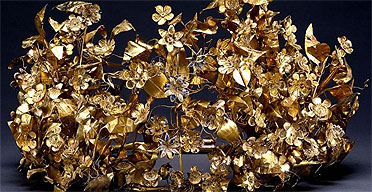How is the Getty Museum different from Enron?
 It's not a trick question. There may be little difference at all. The Getty is one of several museums that have been accused of systematically acquiring stolen antiquities. (The Getty last year agreed to return forty disputed works to the Italian government.) In today's New York Times, an article states that staffers at two other LA-area museums knowingly engaged with smugglers wishing to sell antiquities to the museums.
It's not a trick question. There may be little difference at all. The Getty is one of several museums that have been accused of systematically acquiring stolen antiquities. (The Getty last year agreed to return forty disputed works to the Italian government.) In today's New York Times, an article states that staffers at two other LA-area museums knowingly engaged with smugglers wishing to sell antiquities to the museums.
But there's one difference I see. The Enron spectacle played out on the front pages of the nation's newspapers. Today's Times article led off the Arts section. The Enron conspirators received sentences of twenty years or more in prison. By contrast, there seems to be little appetite to "make an example" of those associated with trafficking in smuggled artworks (charges were dismissed against the main figure in the Getty case, though other charged remain open).
Why the double standard? Why is buying smuggled artwork less odious than defrauding shareholders? Are curators somehow too classy to engage in criminal behavior?
Or is that no one cares about fraud in the narrow niche called the art world?
(Photo: a disputed funerary wreath returned to Greece by the Getty Museum in 2006, from Agence France Presse via the Guardian)
art, fine art, crime, New York Times



0 comments:
Post a Comment